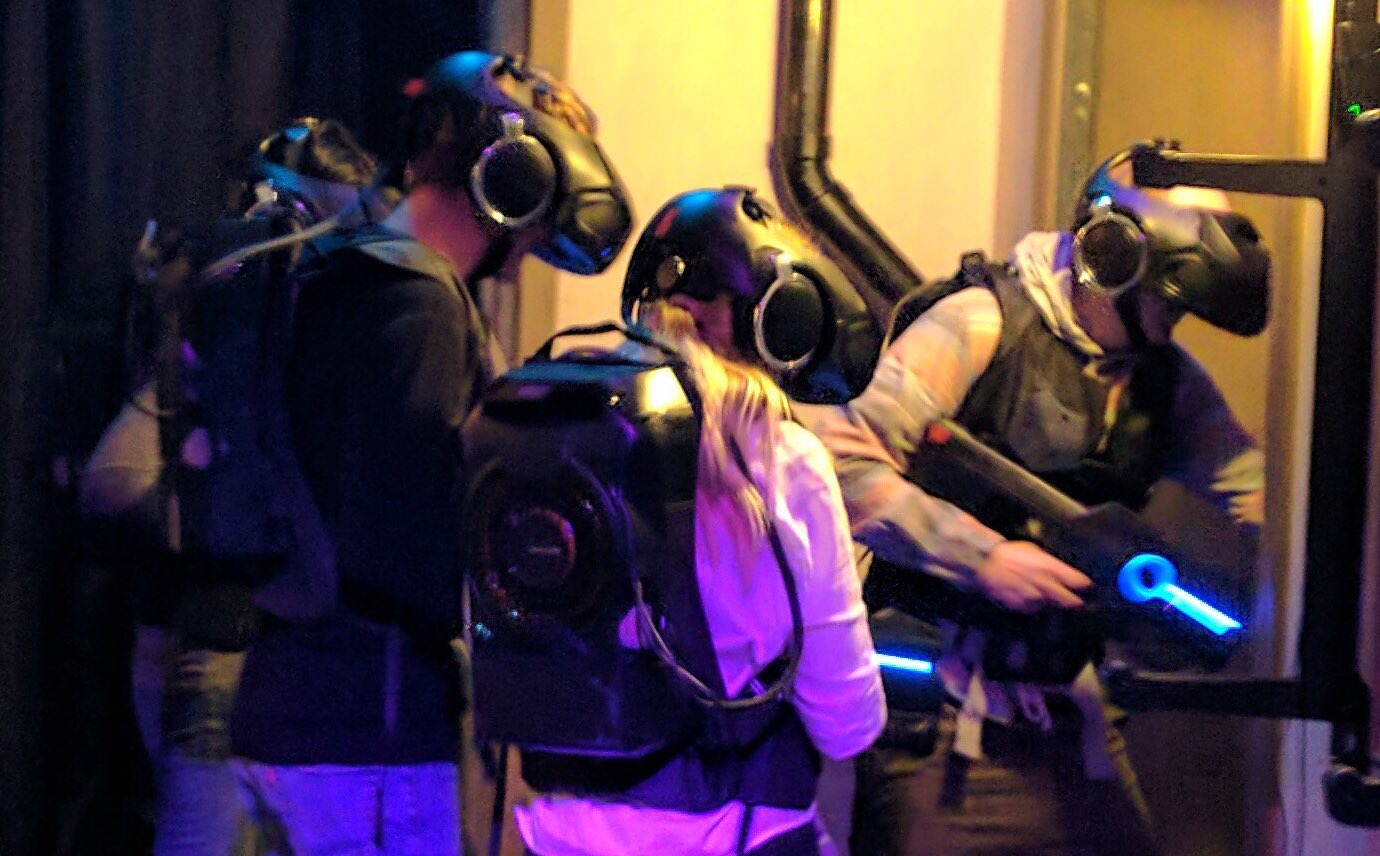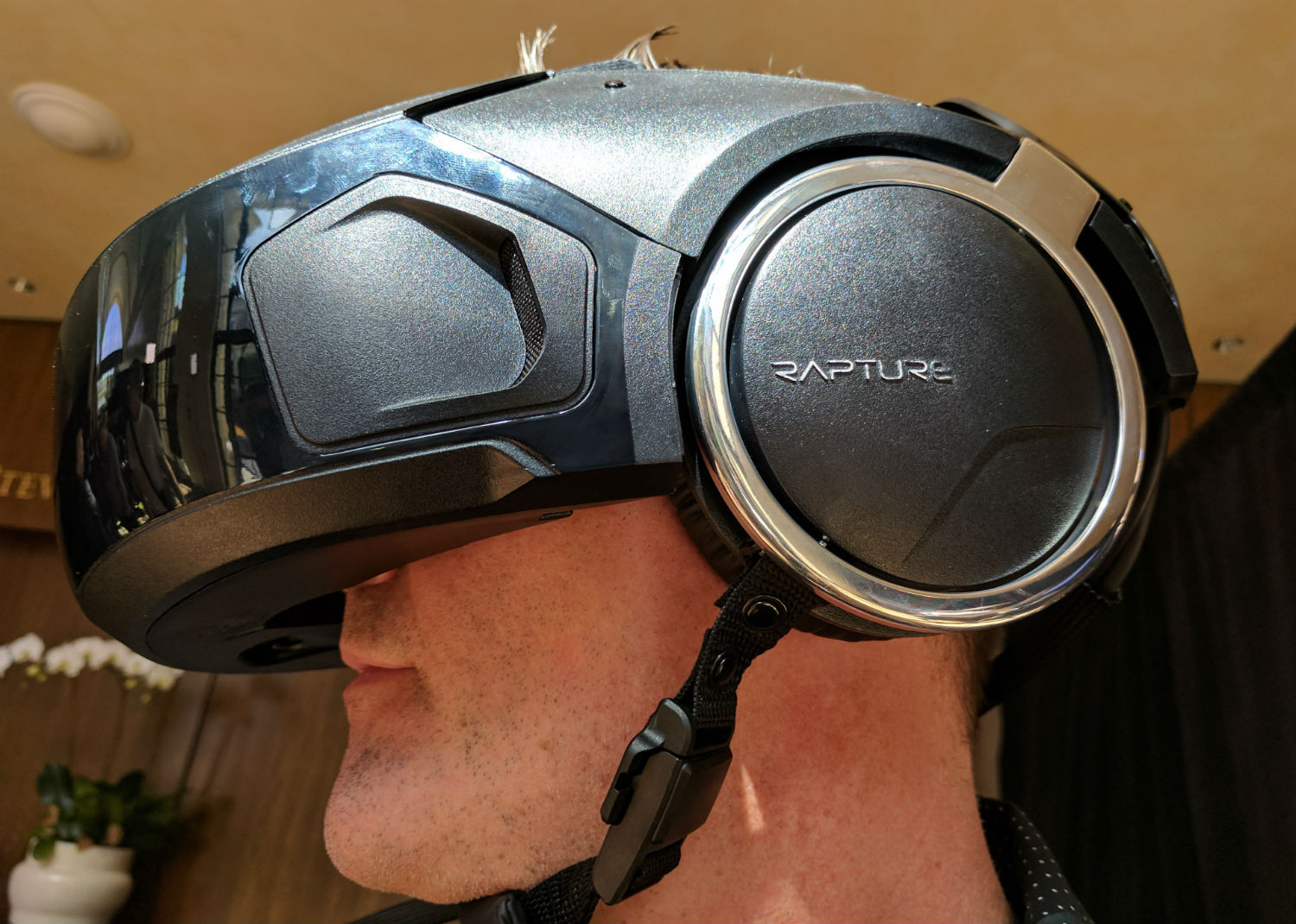The near-constant screaming coming from visitors on the VOID’s stage makes it difficult to follow instructions. Some people, it seems, are afraid of ghosts.
Despite the distraction, I nonetheless get locked and loaded for my journey into Ghostbusters in about 15 seconds. I lock the first strap of my backpack across my chest and the rest of the magnetic clasps find each other and snap into place. The VR helmet fits securely over my head and I’ve suddenly transported from a loading room in Lindon, Utah into a virtual world that looks just as crisp as the ones I visit in my Rift or Vive back at home.
Yet I’m free — totally untethered. I’m giggling already because I’m starting to believe. This startup born in a picturesque valley far from Hollywood’s 360-degree videos and Silicon Valley’s venture capitalists actually produced the ultimate in virtual realism.
No More Compromises In The VOID
When it first launched at Madame Tussauds in New York last year the VOID made some compromises most visitors wouldn’t notice but were obvious to close watchers of the industry. Those issues are gone now, and the “Vision Of Infinite Dimensions” imagined by this startup’s leaders is actually in sight.
The main compromises inside the initial VOID setup were frame rate and resolution. The first VOID location came online with a headset that hands-on reports indicated was a Rift development kit (DK2) running at 75 frames per second. While this frame rate produces a virtual world that appears solid for some, it falls significantly below the 90 frames per second standard in consumer hardware like Rift and Vive. The DK2 also had a lower resolution display compared with what consumers eventually received when finished headsets started shipping roughly one year ago.
As you move through a virtual world, the underlying frame rate and resolution are what most convince your mind that what you experience is real. If the frame rate is too low, you notice a kind of blur to the virtual world as you move. If the resolution is too low, it looks like you’re seeing the world through a screen door because you can actually see the individual pixels. Valve Software and Facebook’s Oculus settled on 90 frames per second and a resolution of 1080×1200 per eye as the threshold which would be most comfortable to the largest segment of people in the first generation of consumer VR hardware.
We confirmed in February the VOID was finally upgrading to this level of hardware, and that as many as 20 stages rolling out in 2017 would begin featuring it. With the opening of the VOID’s location last weekend at the startup’s headquarters in Utah, I was able to set my eyes on this upgraded experience combined with everything else being done to make the VOID’s virtual world feel more immersive than any other.
Finding A Sweet Spot For Location-based VR
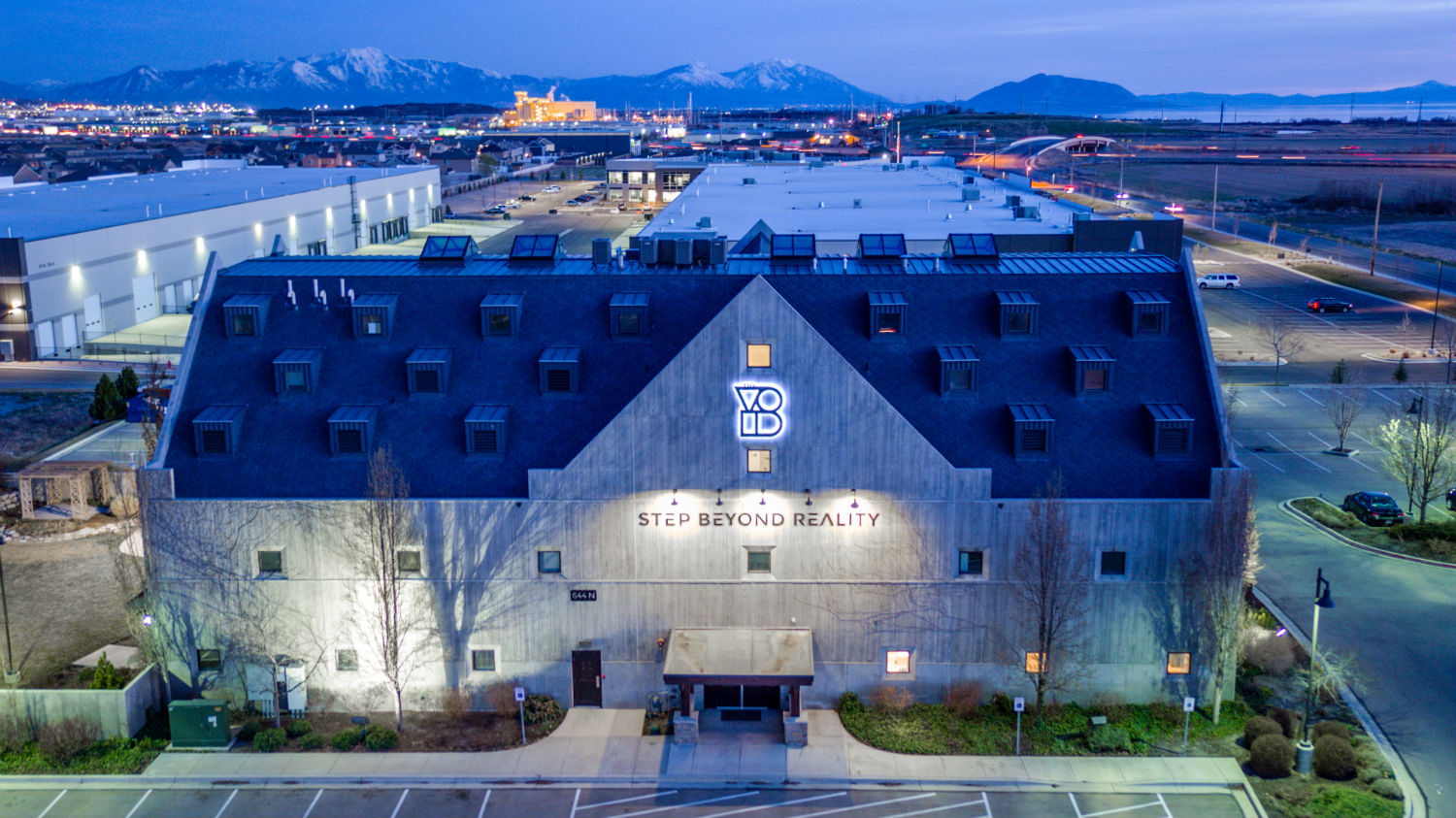 There are a number of challenges facing folks who want to turn location-based VR into a profitable form of entertainment. You need to attract lots of visitors and deliver an amazing experience at a price that’s sustainable. What’s perhaps more critical, though, is that you need reliable equipment allowing lots of people to get in and out very quickly. VOID co-founder James Jensen outlined this for us in February:
There are a number of challenges facing folks who want to turn location-based VR into a profitable form of entertainment. You need to attract lots of visitors and deliver an amazing experience at a price that’s sustainable. What’s perhaps more critical, though, is that you need reliable equipment allowing lots of people to get in and out very quickly. VOID co-founder James Jensen outlined this for us in February:
If you look at those [business] models where people are just taking an at-home system and deploying it in a mall, if you really break it down on the mechanics of how long people are in the experience, how long it takes them to get out of the experience… then those businesses kind of fall apart. It’s all in the details of getting that equipment on, getting it off and providing an amazing experience for the end user.
The VOID seems to have this figured out. From walking in the front door to walking out my total time in the VOID’s building was 30 minutes, and that included introducing myself, watching a safety video, waiting in the lobby for a few minutes and strapping myself into the gear — and of course the visit to the virtual world itself. The critical time when I put on the backpack and a visor was slick and quick.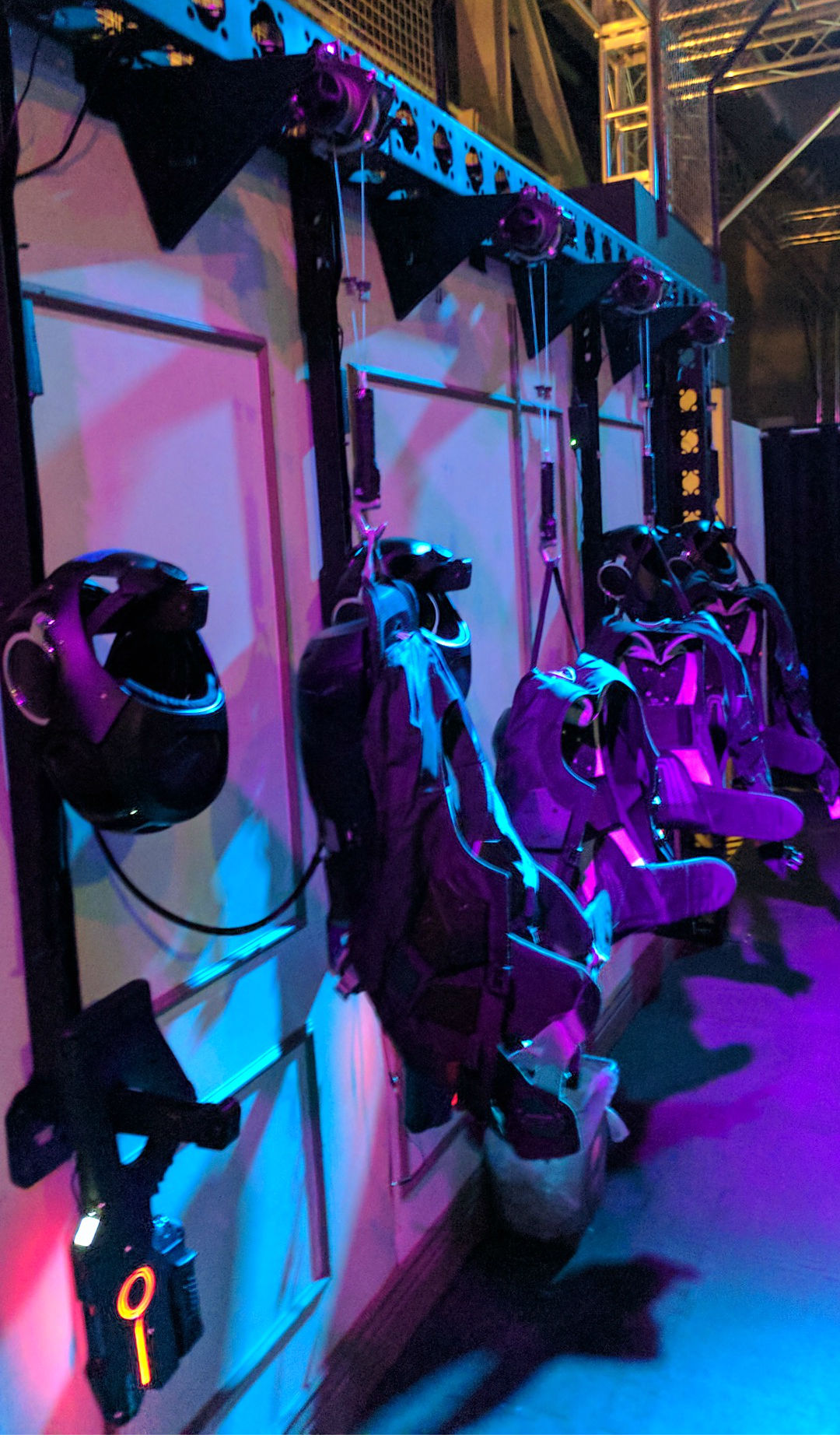
As for reliability, the VOID is also among the first to employ a lower cost tracking solution from OptiTrack allowing for warehouse-sized installations at a fraction of the cost of previous systems. New cameras from OptiTrack can lower the cost of these installations by as much as 40 percent while eliminating another small compromise of location-based VR setups like the one recently launched at Knott’s Berry Farm in Southern California.
Powered by VRstudios, a startup based in Bellevue, Washington, the headsets and guns used for the VR arcade at Knott’s are covered in lightly-colored balls. These balls are arranged in specific patterns that allow cameras overhead to track their precise location, and the location of the headset, gun or other object to which they are attached. Unfortunately, if you’re in a virtual world and reach up and touch your VR headset or feel around your gun these balls jut out from the surface to remind you that there’s some strange technology transporting you to this virtual place. More significantly for operators, these balls can be easily broken off through the kind of constant use that would be critical to the long-term operation of these locations, thus increasing the cost for maintenance and possibility of someone having a bad experience when a ball breaks off and the system loses tracking.
Instead, the VOID’s latest hardware includes lights along the surface of the headset and gun that can be seen by overhead cameras.
For comparison’s sake, the Knott’s location costs around $6 for a three minute run through. The VOID is charging $25 for a 12-15 minute run through, depending how long you take exploring the environment. Knott’s doesn’t use a backpack — instead beaming visuals wirelessly from a PC nearby — but the system runs at 60 frames per second. This is a significant drawback compared to the relative crystal clarity of 90 frames per second now seen in the VOID.
I’ll take the VOID’s backpack at 90 frames per second over a headset-only system running at 60 frames per second. It isn’t even close.
A Playground For Infinite Virtual Worlds
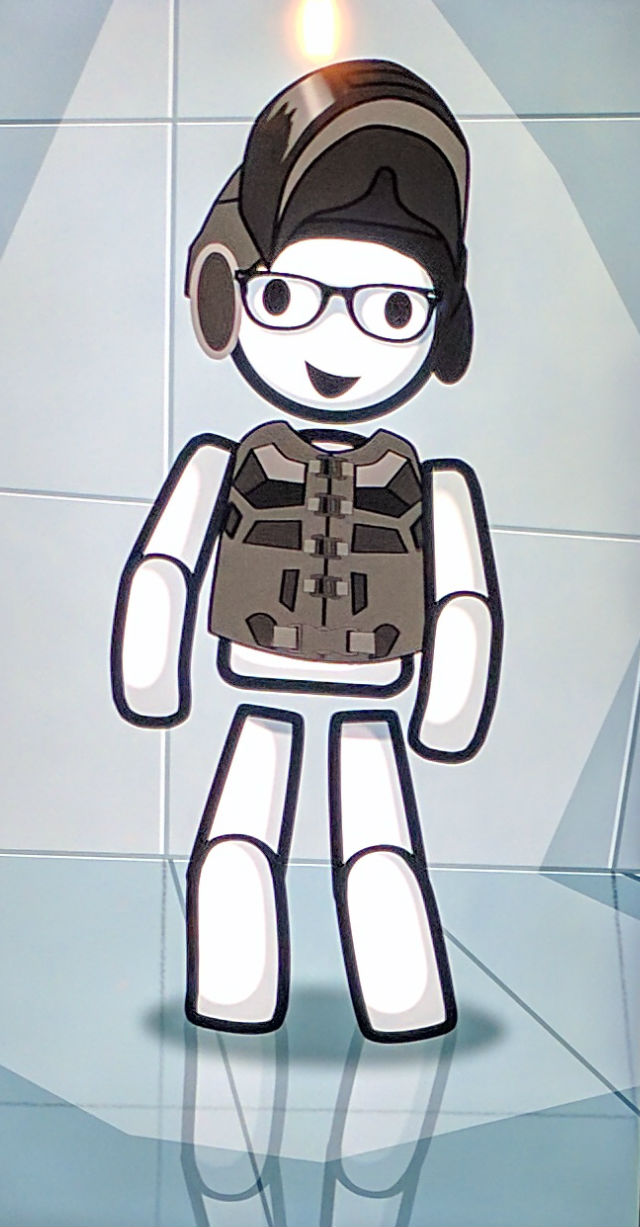
We’ve covered previously the incredible environmental effects used by the VOID to enhance immersion, as well as the Ghostbusters experience itself. So I’ve focused this article on what’s new, how it compares to other systems and what’s possible in the future.
I ran through the VOID on my own. My wife went through after me paired up with three others. For me, the experience was absolutely flawless. Not once did I lose tracking or notice a glitch in the system. In some areas, you are in close quarters with the other visitors which makes bumping up against them a possibility. The VOID suggested these tightly packed spaces can add to the feeling of battling ghosts as a team. My wife also noted avatars occasionally had incorrect poses. This is likely a limitation of a system when it can only track the headset and gun and not a full body yet.
Somewhat related, I felt incredible satisfaction realizing I could reach out and touch the walls, a chair, press buttons in an elevator or grab railing exactly where I expected it all to be. But in such an immersive experience, I found myself extremely disappointed I couldn’t see my hands. There’s a nice spot on the front of the VOID’s headsets which could house a Leap Motion hand tracking sensor and I desperately want to see that functionality included in future versions of the VOID. In fact, the VOID includes that functionality in a different experience they are working on — The Curse of the Serpent’s Eye — which was shown at TED last year.
Let me put the brakes on the hype train for a second, though, and address what many are wondering: $25 for less than 15 minutes of entertainment? Is that worth it? If you’re in the area, I’d say sure. If you’re far away, you better have other reasons for justifying the trip.
That said, the VOID’s Jensen mentioned when we talked in February that a single location could have two or three stages. This is where things could get really interesting. With the quality now possible with the VOID’s hardware, it is pretty exciting to consider visiting a single place with friends and family and paying, say, $50 per person to experience three entirely different virtual worlds one after another.
Ghostbusters goes for the scares, but future worlds don’t have to stop there. Truly, the VOID’s “Vision of Infinite Dimensions” seems within reach now that they have the right equipment to explore.


